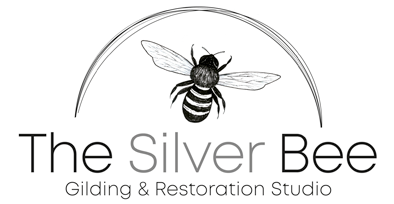Gilding & Restoration
Gilding techniques and tools have scarcely changed since the 18th century and there is no substitute for the sumptuous and reflective qualities of a properly gilded surface. The two common methods of Gilding are Oil and Water. The latter has an involved process of gesso and bole preparation which provides a cushion for the gilded surface to have a burnished mirror finish. It is not suitable for exterior work and is predominantly used over wooden substrates for Mirror and Picture frames, Furniture, Sculpture and various interior decorative items. Oil gilding cannot be burnished but is a simpler and quicker process by applying oil based gold size to adhere the metal leaf. This can be on practically any solid surface which is correctly prepared. It is used internally and extensively in architectural gilding. It is also weather resistant making it ideal for exterior applications.
Moulding & Casting
Moulds and castings are part of restorer’s skill. This is an integral part in the practice of restoration when replacing missing or badly damaged Composition (or ‘compo’) ornament that is found on certain period Mirror or Picture Frames and Furniture. Utilising adornment on the original piece can be used to cast the moulds for duplication. Traditional compo is then cast and applied hence maintaining the intrinsic value and integrity of the object.
I make both fine ornate plaster casts from moulds and use compo when restoring finely decorative features on works. For ornamentation that requires replicating but cannot be moved from its position; impression moulds are taken as a reference so the work can be carried out in the studio.
French Polishing
French Polishing French polishing is a wood finishing technique that results in a very high gloss surface, with a deep colour and display a gem like quality. French polishing consists of applying many thin coats of shellac dissolved in denatured alcohol using a rubbing pad lubricated with one of a variety of oils.Gilding & Restoration
Gilding techniques and tools have scarcely changed since the 18th century and there is no substitute for the sumptuous and reflective qualities of a properly gilded surface. The two common methods of Gilding are Oil and Water. The latter has an involved process of gesso and bole preparation which provides a cushion for the gilded surface to have a burnished mirror finish. It is not suitable for exterior work and is predominantly used over wooden substrates for Mirror and Picture frames, Furniture, Sculpture and various interior decorative items. Oil gilding cannot be burnished but is a simpler and quicker process by applying oil based gold size to adhere the metal leaf. This can be on practically any solid surface which is correctly prepared. It is used internally and extensively in architectural gilding. It is also weather resistant making it ideal for exterior applications.

Moulding & Casting
Moulds and castings are part of restorer’s skill. This is an integral part in the practice of restoration when replacing missing or badly damaged Composition (or ‘compo’) ornament that is found on certain period Mirror or Picture Frames and Furniture. Utilising adornment on the original piece can be used to cast the moulds for duplication. Traditional compo is then cast and applied hence maintaining the intrinsic value and integrity of the object.
I make both fine ornate plaster casts from moulds and use compo when restoring finely decorative features on works. For ornamentation that requires replicating but cannot be moved from its position; impression moulds are taken as a reference so the work can be carried out in the studio.

French Polishing
French Polishing French polishing is a wood finishing technique that results in a very high gloss surface, with a deep colour and display a gem like quality. French polishing consists of applying many thin coats of shellac dissolved in denatured alcohol using a rubbing pad lubricated with one of a variety of oils.



